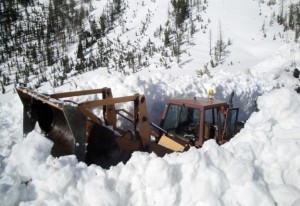 At first glance, the sequester seemed like nothing more than a Great Unpleasantness. Much bickering, many threats and accusations, many teeth gnashed by people who said the across-the-board cuts were irresponsible and idiotic. But there was no obvious sense of urgency, which is why your federal leaders declined to hammer out a deal.
At first glance, the sequester seemed like nothing more than a Great Unpleasantness. Much bickering, many threats and accusations, many teeth gnashed by people who said the across-the-board cuts were irresponsible and idiotic. But there was no obvious sense of urgency, which is why your federal leaders declined to hammer out a deal.
A few percent here and there. How bad could it be?
We are finding out. Apparently you can’t cut $85 billion in discretionary spending from a budget—even a big budget, like the federal government’s—without a little pain. Many of the services and programs people count on are affected. Airport security, food inspectors, work-study programs and more. And the chronically underfunded National Park Service is now even more underfunded.
Some conservative news outlets and politicians have claimed that the effects have been exaggerated, and that the more noticeable cutbacks are pure theater, designed to grab headlines and sympathy for the administration’s position.
The Washington Post has a nice story documenting how the budget cuts and service reductions get balanced out in the real world of America’s first national Park. Instructed to trim $1.8 million from his budget, Yellowstone’s superintendent opted to delay opening the park for two weeks. Savings came from fewer employees on the payroll and letting sunlight do some of the road-clearing instead of snowplows. He also instituted a freeze on hiring permanent staff. He hit his marks: $1.8 million saved.
Unfortunately, as others have reported, “area officials expect to lose around $2 million in revenue in the first two weeks of the park’s delayed opening.” That’s a world of hurt for local businesses. Losing two weeks means the restaurants, motels, guides and others just had their 20-week season cut by 10 percent.
Is a two-week closing necessary? Probably. As one former national park manager pointed out in response to the Post’s story, “Any businessperson knows that midyear, across-the-board budget cuts are more difficult to make than are those you can plan for a year out.” And “cuts halfway through the fiscal year are, in practical terms, more like a 10 percent decrease than one of 5 percent.”
Some states see the sequester as an opportunity, though. In what might be an act of retaliatory theater, South Dakota Gov. Dennis Daugaard has asked if his state could run the 64-site Elk Mountain Campground at Wind Cave National Park, which the NPS said would have to be closed for the 2013 season. Daugaard claims the state could make money on the facility, which hosted 6,600 campers last year.
Photo: A front loader clearing snow from Yellowstone’s Sylvan Pass, May 11, 2011, via the NPS.









